The top 9 road bike trends that will define 2022
What will be the new year's new normals? The CW tech team peers into its crystal ball...

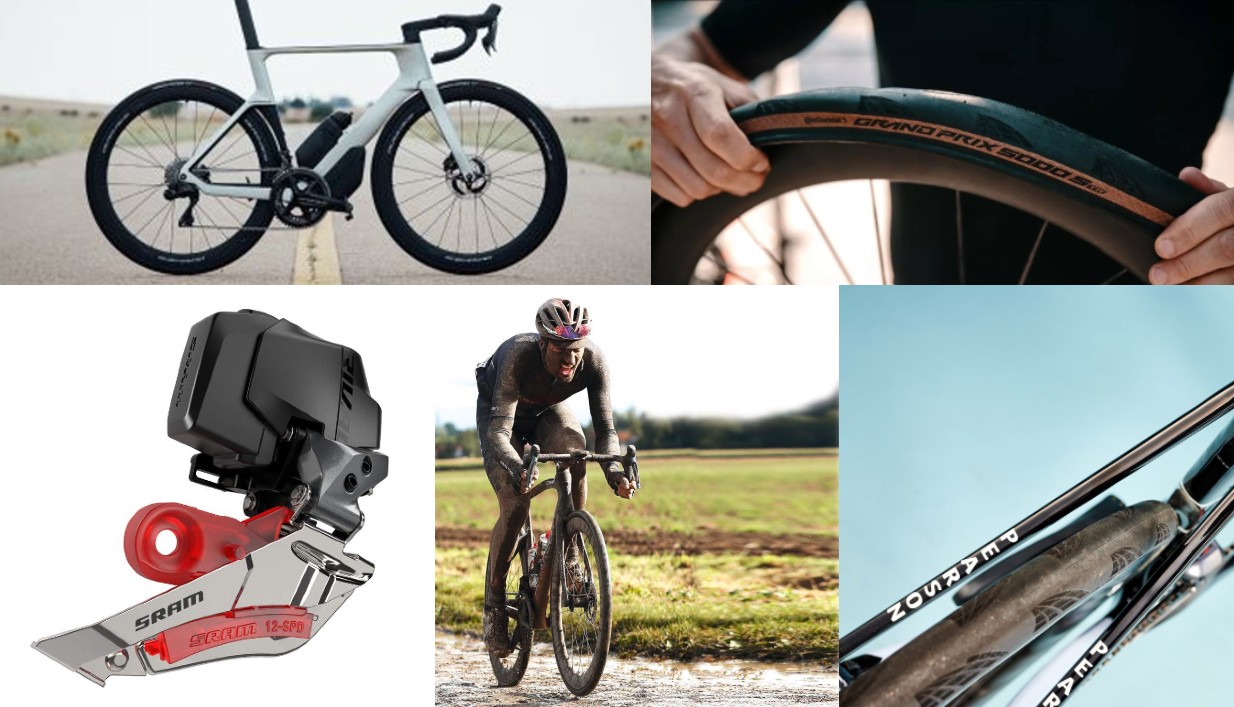
- 1. Integrated (but more adjustable) cockpits
- 2. Even more tyre clearance
- 3. Creative aero additions (or 'boxing clever')
- 4. More comfort, less stiffness
- 5 Electronic-only frames
- 6. Electronic shifting for cheaper groupsets
- 7. 12-speed mechanical Shimano 105
- 8. The continuing slow death of the rim brake
- 9. Hookless rims go mainstream
The pace of new things arriving in bike shops might have slowed a little bit over the last year, but in 2021 innovation was moving onwards as quickly as ever.
New 12-speed Shimano Dura-Ace was the big story of 2021, which we correctly predicted. We didn't predict Ultegra would be launched at the same time, but for 2022 we've given the crystal ball a good thump.
So let's take a look at what we think we'll be seeing more of - or less of - in 2022.
1. Integrated (but more adjustable) cockpits

Concealing brake hoses and gear wires and merging bars and stems in the name of aerodynamics has become something of an obsession with the bike industry in recent years and if 2021 is anything to go by, this looks set to continue. There’s been a degree of kickback from consumers who, CdA be damned, want to retain the freedom to swap stems, stack spacers above or below without disconnecting everything or even change handlebar tilt - which of course is impossible if a bar/stem is a single piece of carbon.
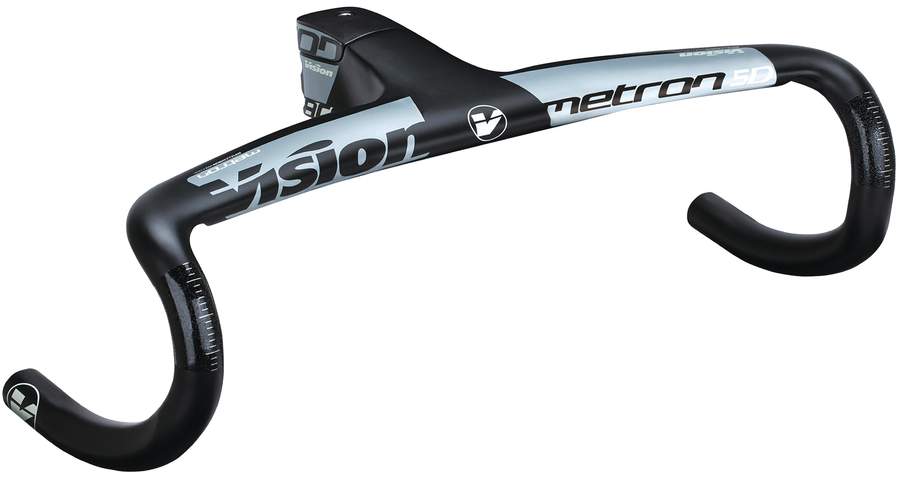
However, we are seeing the emergence of an integrated-cockpit middle ground. Whereas the Vision Metron 5D (pictured) - one of the one-piece bar/stems that drove the trend in the pro peloton - lacks any adjustability whatsoever, we’re expecting more component manufacturers to go down the route of Vision/FSA’s ACR system, in which the bar and stem are separate but cables run inside them and down into the bike’s head tube. The Specialized Tarmac SL7 Expert uses this type of setup, although with Specialized's proprietary components, as does the new Cervélo R5.
2. Even more tyre clearance

With disc brakes now dominant in the world of lightweight race bikes, the manufacturers have realised that they’re free to build in an almost unlimited amount of tyre clearance.
In the last two years bigger tyre clearance has become one of the expected highlights of a new bike’s launch spec alongside saved watts and increased stiffness, and that will continue.
The latest race content, interviews, features, reviews and expert buying guides, direct to your inbox!
Whereas the walls of a 28mm tyre used to represent the outer limit for clearance on road bikes, now we’re seeing space for 34mm rubber and beyond.
Lower rolling resistance, more comfort and a better chance of tubeless sealant doing its job due to lower pressures are all benefits of bigger tyres that will be increasingly enjoyed from here on.
3. Creative aero additions (or 'boxing clever')
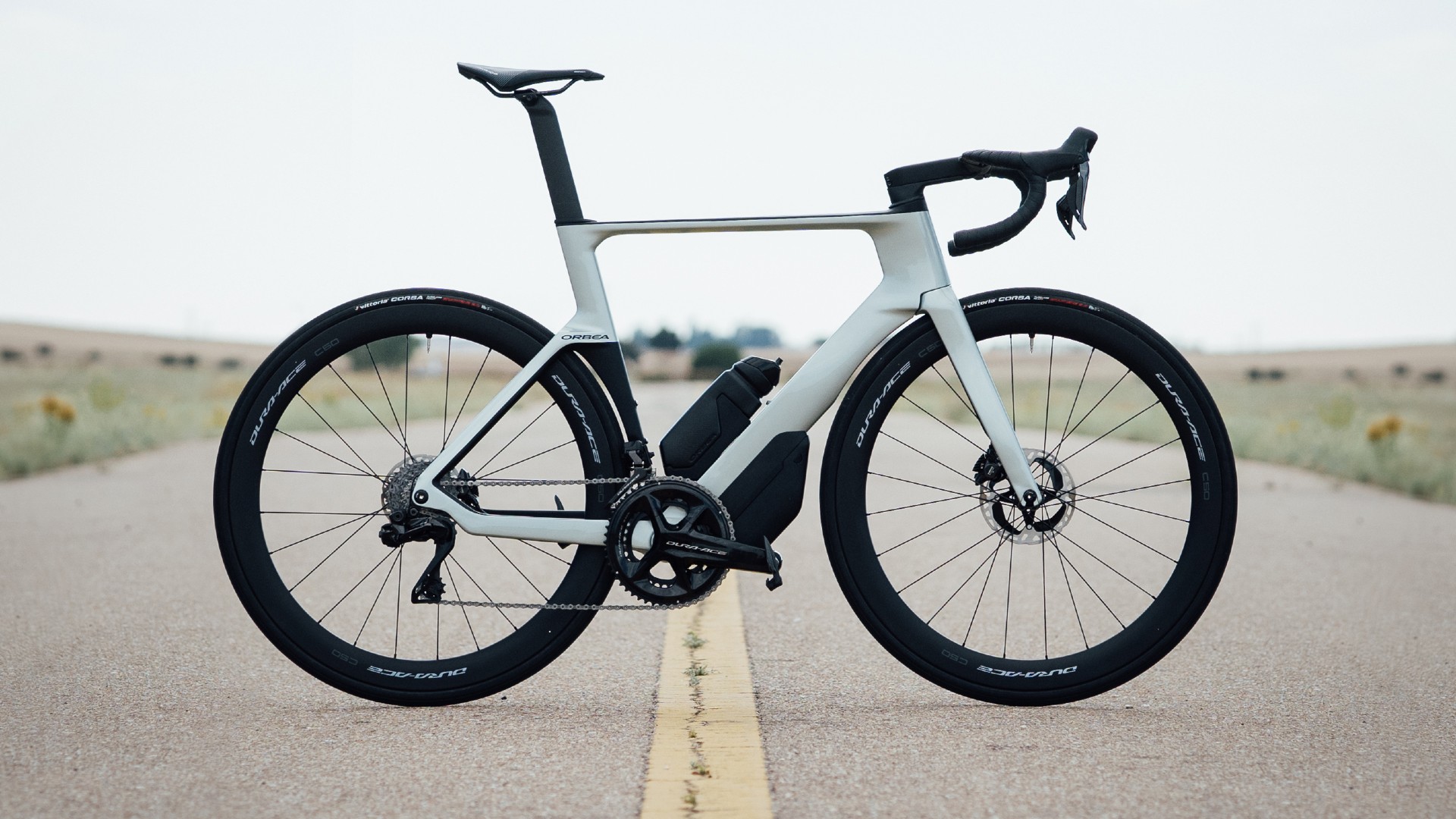
Specially shaped, specially positioned bottles have been a key part of a bike’s aerodynamics as far back as the 1980s - the best known is Campagnolo’s famous white, flattened one.
But more recently brands such as BMC have experimented with filling in the gap between down tube and seat tube with a custom ‘Aeromodule’ box, on top of which the water bottles sit - look at the Swiss brand’s Timemachine.

Meanwhile time trial bikes, borrowing storage box ideas from triathlon, have also tested faster with them than without.
But possibly the most radical solution, which might have smoothed air but definitely divided opinion, was the Orbea Orca Aero’s ‘Cargo Foil’ box, sited between the front wheel and the down tube.
Sure none of this is UCI legal, but that doesn’t mean you can’t use them for a Strava KOM.
4. More comfort, less stiffness

When the new Cervélo R5 launched at the end of 2021, the big story was that it was less stiff. Less stiff?! Had the Canadian brand gone soft in the head as well as other bike parts?
Actually it was a pretty smart and very original move. With the old R5 ultimate stiffness had apparently been achieved and now it was time to dial it back for some extra comfort for Grand Tour riders.
Cervélo claimed there was a magic ratio for head tube/down tube stiffness and that the new R5 was designed around it.
As one of the long-time innovators in bike design we wouldn’t be surprised if more brands followed Cervélo's lead and started to take a more moderate approach to the stiffness of their own bikes.
5. Electronic-only frames

The new Cervélo R5 was a trendsetter in many ways - naturally it ticked off the bigger-tyres and the integrated (but adjustable and swappable) cockpit - but the Canadian brand almost mentioned in passing that it was for electronic groupsets only. This allowed for a more efficient manufacturing process with fewer holes, according to Cervélo.
We’ve even heard of brands such as Vielo, which already makes 1x specific bikes, working on SRAM AXS-only bikes with no hole in the chainset for a rear mech wire or cable.
With Shimano’s top two road groupsets, Dura-Ace and Ultegra, now Di2 only, it’s only to be expected that the flagship models in a range will be electronic only, and if you’re a SRAM AXS user it would add a nice custom touch if holes that aren’t necessary simply weren’t there.
6. Electronic shifting for cheaper groupsets
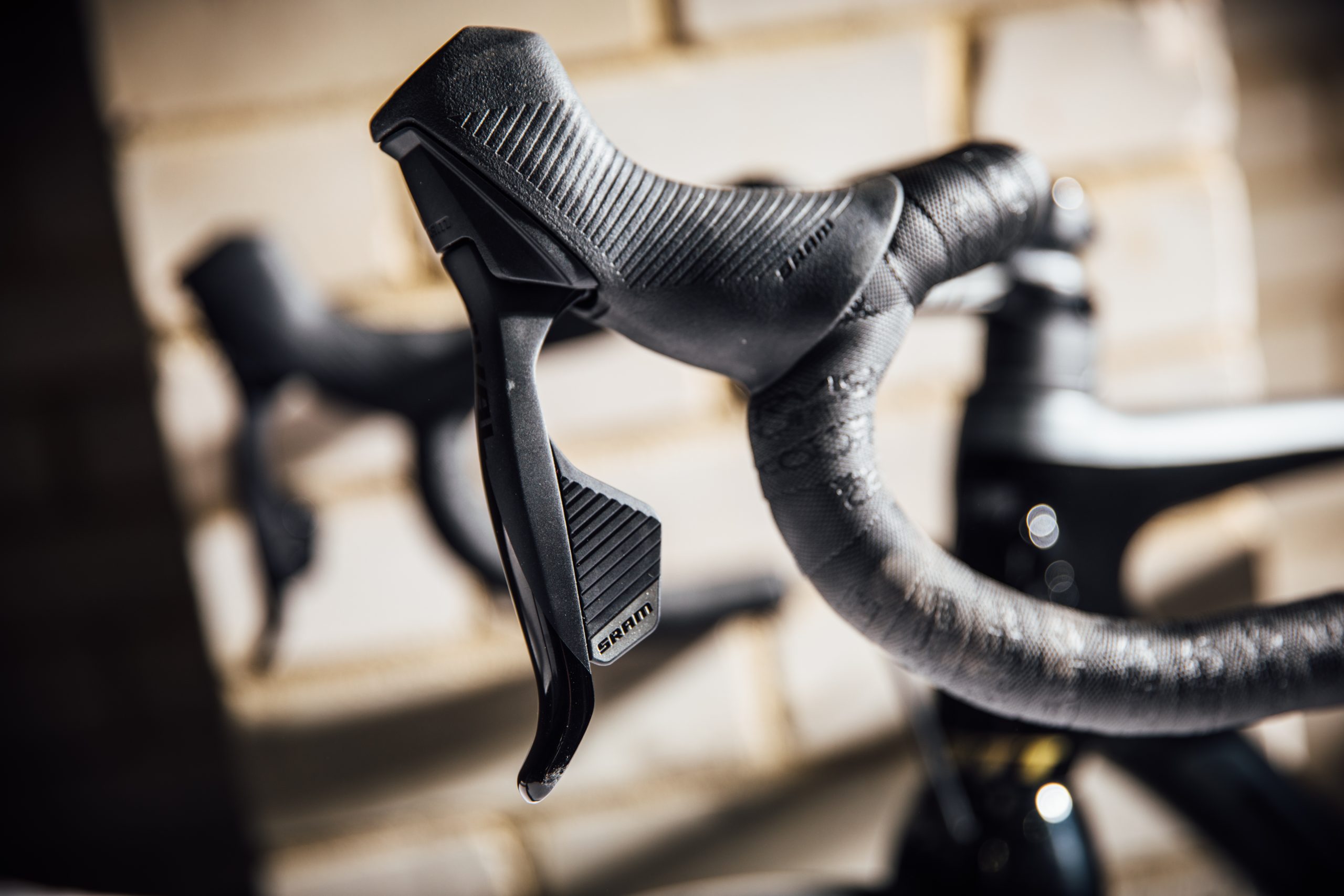
Whereas once electronic gears were only for pros, now they’re reaching the third-tier groupset. In 2021 SRAM was first to introduce electronic shifting to a mid-range groupset with Rival eTap AXS, which is third in its hierarchy after Red and Force, but so far Shimano only has its top two - Dura-Ace and Ultegra - as electronic groupsets.
Although Shimano famously remains very tight-lipped about its forthcoming technology and makes a point of not responding to speculation (despite our best efforts) we predict 105 Di2 is coming - perhaps not as soon as 2022 but you can bet its R&D team is already working up a prototype.
Although Shimano would never admit to taking any notice of what SRAM does, since the US company is a fraction the size of Shimano, the new Rival eTap group has been well reviewed, including by us, and appears to be very popular with a new breed of cyclist, many of whom also train and race indoors and expect everything to work electronically in the same way outdoors too.
Shimano must be thinking it’s time to catch up.
As for Campagnolo, at the moment only its top groupset, Super Record has an EPS electronic version but a new Record EPS v4 looks set to join it. We hope Chorus stays mechanical for a few years yet. Read on to the next point and we’ll explain why.
7. 12-speed mechanical Shimano 105
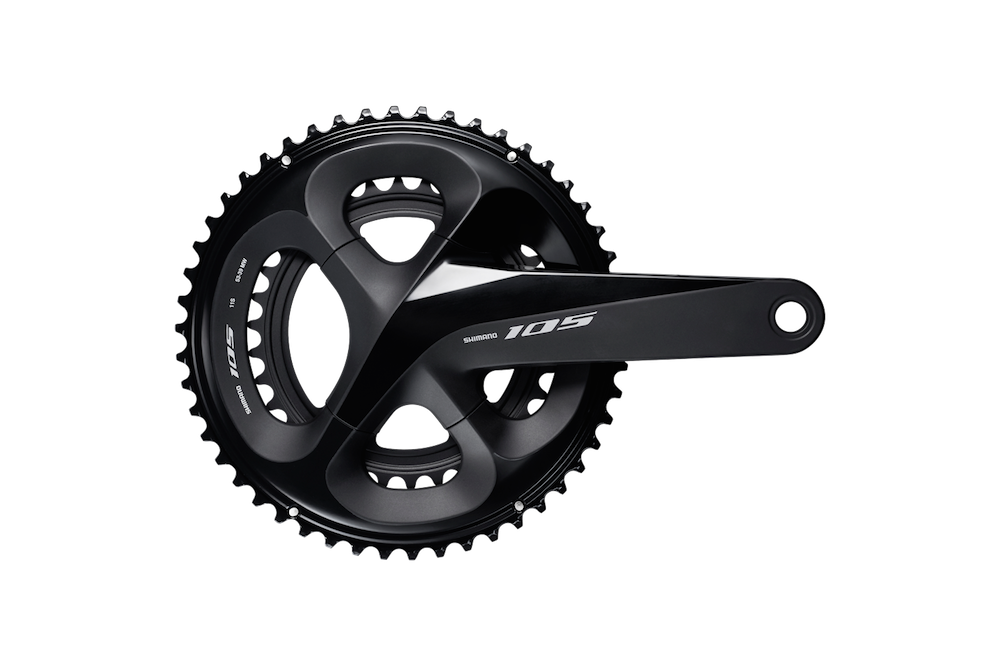
OK, we’ve already said we expect a Shimano 105 Di2 at some point in the future, but we’re going to sit on the fence here and postulate that 12-speed 105 might equally be on the cards - and perhaps is more likely. Shimano’s top two mechanical groupsets, Dura-Ace R9200 and Ultegra R8100, were launched in 2021. Fourth-tier Tiagra was updated in 2019. Bearing in mind 105 was last updated in 2018 it’s almost certainly the next one to be redesigned.
At the moment there’s a big jump up from 105 to Ultegra R8100, both in price and performance. At the moment the rim-brake 105 R7000 costs around £600 and the disc-brake 105 R7020 just under £800. New Shimano Ultegra R8100 costs just over £3,000 (power meter chainset version).
We’re hoping Campagnolo takes note and continues with the excellent Chorus mechanical group, which was equivalent (but priced slightly above) outgoing mechanical Ultegra.
8. The continuing slow death of the rim brake

When Pinarello’s new Dogma F was launched in 2021, perhaps for the first time ever there was general surprise that there were both disc and rim versions.
With the demise of the rim brake continuing in all quarters, both consumers and industry expected the new team bike to be disc only, in line with Ineos Grenadiers gradually migrating to discs - even in Paris-Roubaix, as we saw.
In fact, 2021 was the first time that there wasn't a single rim-brake bike at Paris-Roubaix.
Fausto Pinarello says he likes to give riders the choice, but Pinarello’s own figures reveal that it expects 80 per cent of sales of the new Dogma F to be the disc brake version and it seems likely that this will be the last ever rim-braking Dogma.
Even Giant, the world’s biggest bicycle company, only offers the top TCR Advanced SL in disc brake builds (though you can still buy the rim-brake version as a frameset).
If you want a high-end rim brake bike, French carbon specialist Time still offers each of its three models in rim brake, but increasingly it seems they’re a dying breed.
9. Hookless rims go mainstream

Those wheel manufacturers who weren’t yet offering hookless rims were able to use the handy - and genuine - excuse that hookless rims meant limiting riders’ tyre choice: the highly popular Continental GP5000 wasn’t hookless compatible.
But then in 2021 Continental launched the GP5000 S TR and it instantly won Paris-Roubaix with Sonny Colbrelli.
Although our own testing demonstrated that it’s absolutely essential not to inflate the GP5000 S TRs beyond recommended limits or risk a blow-off, the tyre has given hookless rims the traction they needed to break into the mainstream without the technology being questioned, and hookless will become much more widespread from here on.
Simon Smythe is a hugely experienced cycling tech writer, who has been writing for Cycling Weekly since 2003. Until recently he was our senior tech writer. In his cycling career Simon has mostly focused on time trialling with a national medal, a few open wins and his club's 30-mile record in his palmares. These days he spends most of his time testing road bikes, or on a tandem doing the school run with his younger son.
